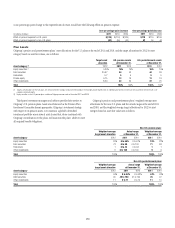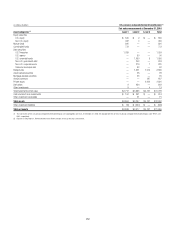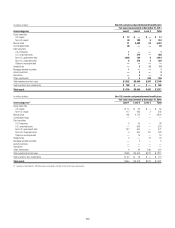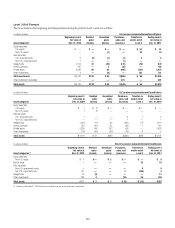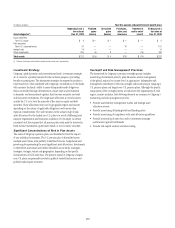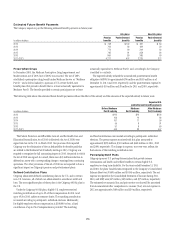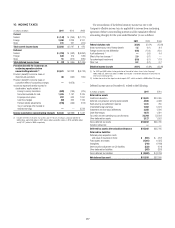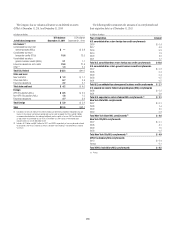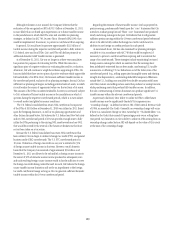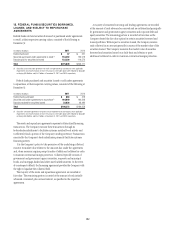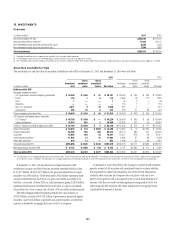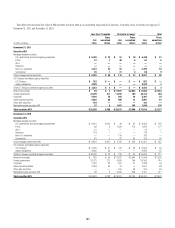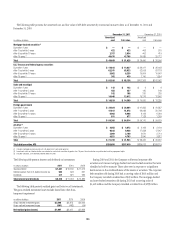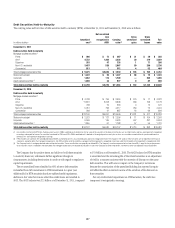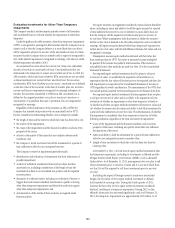Citibank 2011 Annual Report Download - page 202
Download and view the complete annual report
Please find page 202 of the 2011 Citibank annual report below. You can navigate through the pages in the report by either clicking on the pages listed below, or by using the keyword search tool below to find specific information within the annual report.180
Although realization is not assured, the Company believes that the
realization of the recognized net DTA of $51.5 billion at December 31, 2011
is more likely than not based upon expectations as to future taxable income
in the jurisdictions in which the DTAs arise and available tax planning
strategies, as defined in ASC 740, Income Taxes (formerly SFAS 109), that
would be implemented, if necessary, to prevent a carryforward from expiring.
In general, Citi would need to generate approximately $111 billion of
taxable income during the respective carryforward periods to fully realize its
U.S. federal, state and local DTAs. Citi’s net DTAs will decline primarily as
additional domestic GAAP taxable income is generated.
As of December 31, 2011, Citi was no longer in a three-year cumulative
loss position for purposes of evaluating its DTAs. While this removes a
significant piece of negative evidence in evaluating the need for a valuation
allowance, Citi will continue to weigh the evidence supporting its DTAs. Citi
has concluded that there are two pieces of positive evidence which support the
full realizability of its DTAs. First, Citi forecasts sufficient taxable income in
the carryforward period, exclusive of tax planning strategies. Second, Citi has
sufficient tax planning strategies, including potential sales of assets, in which
it could realize the excess of appreciated value over the tax basis of its assets.
The amount of the DTAs considered realizable, however, is necessarily subject
to Citi’s estimates of future taxable income in the jurisdictions in which it
operates during the respective carryforward periods, which is in turn subject
to overall market and global economic conditions.
The U.S. federal consolidated tax return NOL carryforward component
of the DTAs of $3.8 billion at December 31, 2010 was utilized in 2011. Based
upon the foregoing discussion, as well as tax planning opportunities and
other factors discussed below, Citi believes the U.S. federal and New York state
and city NOL carryforward period of 20 years provides enough time to fully
utilize the DTAs pertaining to the existing NOL carryforwards and any NOL
that would be created by the reversal of the future net deductions that have
not yet been taken on a tax return.
Because the U.S. federal consolidated tax return NOL carryforward has
been utilized, Citi can begin to utilize its foreign tax credit (FTC) and general
business credit (GBC) carryforwards. The U.S. FTC carryforward period is
10 years. Utilization of foreign tax credits in any year is restricted to 35%
of foreign source taxable income in that year. However, overall domestic
losses that the Company has incurred of approximately $56 billion as of
December 31, 2011 are allowed to be reclassified as foreign source income to
the extent of 50% of domestic source income produced in subsequent years
and such resulting foreign source income would in fact be sufficient to cover
the foreign tax credits being carried forward. As such, Citi believes the foreign
source taxable income limitation will not be an impediment to the foreign
tax credit carryforward usage as long as Citi can generate sufficient domestic
taxable income within the 10-year carryforward period.
Regarding the estimate of future taxable income, Citi has projected its
pretax earnings, predominantly based upon the “core” businesses that Citi
intends to conduct going forward. These “core” businesses have produced
steady and strong earnings in the past. Citi believes that it will generate
sufficient pretax earnings within the 10-year carryforward period referenced
above to be able to fully utilize the foreign tax credit carryforward, in
addition to any foreign tax credits produced in such period.
As mentioned above, Citi has also examined tax planning strategies
available to it in accordance with ASC 740 that would be employed, if
necessary, to prevent a carryforward from expiring and to accelerate the
usage of its carryforwards. These strategies include repatriating low taxed
foreign source earnings for which an assertion that the earnings have
been indefinitely reinvested has not been made, accelerating U.S. taxable
income into or deferring U.S. tax deductions out of the latter years of the
carryforward period (e.g., selling appreciated intangible assets and electing
straight-line depreciation), accelerating deductible temporary differences
outside the U.S., holding onto available-for-sale debt securities with losses
until they mature and selling certain assets that produce tax exempt income,
while purchasing assets that produce fully taxable income. In addition,
the sale or restructuring of certain businesses can produce significant U.S.
taxable income within the relevant carryforward periods.
As previously disclosed, Citi’s ability to utilize its DTAs to offset future
taxable income may be significantly limited if Citi experiences an
“ownership change,” as defined in Section 382 of the Internal Revenue Code
of 1986, as amended (the Code). Generally, an ownership change will occur
if there is a cumulative change in Citi’s ownership by “5% shareholders” (as
defined in the Code) that exceeds 50 percentage points over a rolling three-
year period. Any limitation on Citi’s ability to utilize its DTAs arising from an
ownership change under Section 382 will depend on the value of Citi’s stock
at the time of the ownership change.


